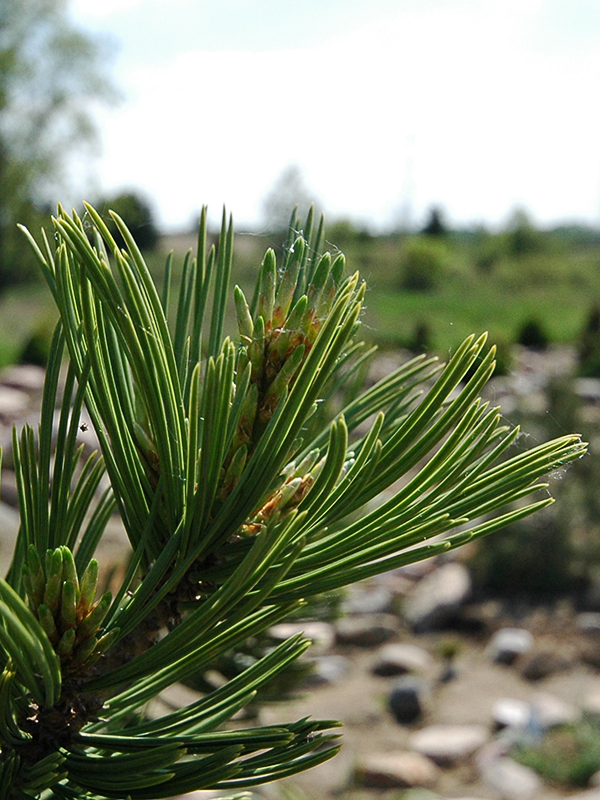| General Description | Slow growing long lived tree. |
| ID Characteristic | Needles in fascicles of 5 with globular cones and very distinctive scaly, brown, plated bark on older trees. |
| Shape | White bark pine has a rapidly spreading, broad rounded to irregular crown. |
| Landscape | Use as a shade tree, windbreak or an accent tree. |
| Propagation | Stratify seeds by soaking in water for 1 - 2 days then place in a moist medium at 1 - 5 °C for 90 to 120 days. |
| Pests | White Pine Blister Rust and Mountain Pine Beetle . The plant is considered a species at risk in part due to the above but also because fire and climate change. |
| Notable Specimens | Jasper National Park, Jasper, Alberta, Canada. |
| Habitat | The mountains of the Western United States and Canada found growing at the treeline. |
| Bark/Stem Description | Young growth has thin, smooth chalky white bark, while the bark on older trees is comprised of scaly brown plates. |
| Flower/Leaf Bud Description | Ovoid, light red-brown 0.8-1 cm. |
| Leaf Description | The needles are 3 -9 cm long in fasicals of 5, slightly curved, stiff blueish-green in colour and clumped near the end of the branches. |
| Flower Description | Female strobili and cones form at the ends of the branches, while the red male strobili and pollen form throughout the crown on the current year's growth. |
| Fruit Description | 3-8 cm, globular, cones that grow 90° to the branches. The cones remain closed, seeds are released when the cone decays. Seeds are 1 cm long. |
| Colour Description | Leaves are blueish-green, whitish grey bark, and dark purple juvenile cones turning brown as they age. Buds are redish brown. |
| Texture Description | Smooth bark. |
